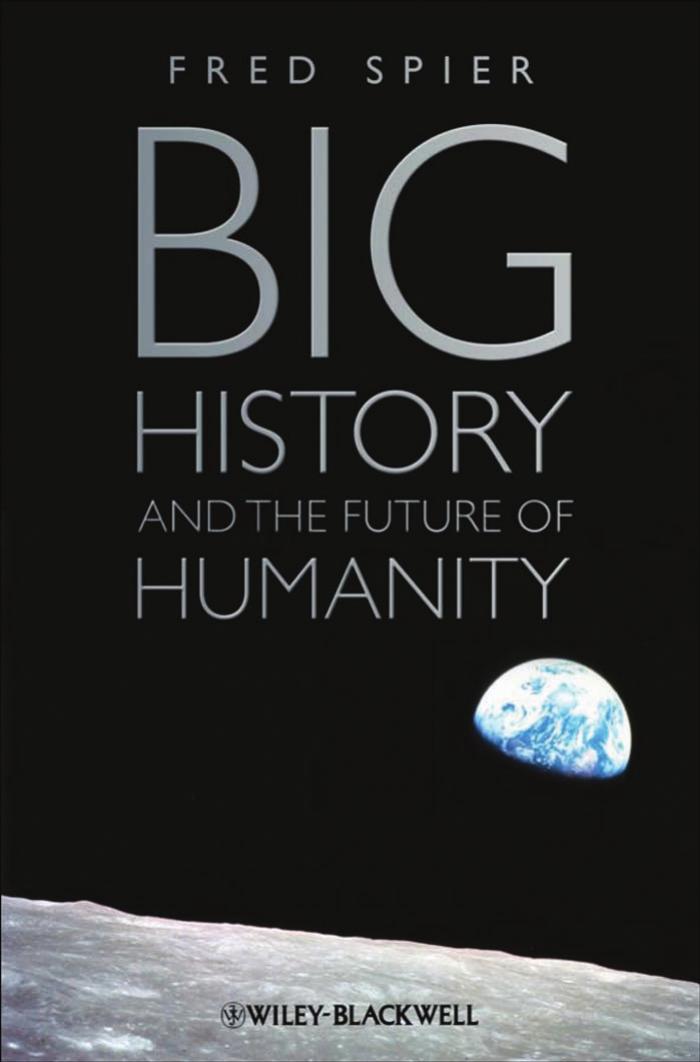Big History and the Future of Humanity by Fred Spier

Author:Fred Spier
Language: eng
Format: epub, pdf
ISBN: 9781118881712
Published: 2015-03-18T00:00:00+00:00
The Emergence of the Biological Food Web
Between 575 and 540 million years ago – a period of a mere 35 million years – life suddenly became more complex. A wide range of large multicellular organisms emerged that were endowed with an amazing variety of organs. This was the beginning of complex life as we know it today. All these organisms consisted of groups of eukaryotic cells that specialized in performing functions for the entire organism, such as mouths, digestive tracts, brains, eyes and legs or fins.23
Apparently, for such organisms the cost of maintaining greater complexity was rewarded by better chances for survival and reproduction. Seen in this light, the emergence of complexity was a survival strategy for some species, but not for all, in which the benefits of harvesting sufficient matter and energy as well as the construction of Goldilocks circumstances in the form of sufficient means of defense against others outweighed the expense of creating and maintaining all these new forms of complexity.
As soon as more complex organisms had emerged, there was usually no way back. Only rarely have life forms become less complex. And if that happened, such species did so within very special circumstances, such as dark caves, in which eyes, for instance, were less useful, and were lost as a result. But there are no cases known to me of complex organisms that spontaneously dissociated into their constituent cells, which subsequently lived and reproduced independently.
A situation of constrained development along a certain path with no way back is known as ‘path dependency.’ This phenomenon is not unique for complex life. To the contrary, the concept of path dependency can be applied all throughout big history. As we saw earlier, stars, planets and galaxies can be interpreted as cosmic structures that develop along certain lines, because they are constrained by external and internal circumstances, such as their mass, size and neighbors. One can even argue that the history of the universe as a whole is constrained by a path dependency that is defined by the specific values of the natural constants, which allow only certain types of complexity to emerge. Had the force of gravity been much stronger, for example, or electromagnetism much weaker, the cosmos would have looked very different.
Let us return to the emergence of complex life. Complex life forms cannot spontaneously fall apart anymore and continue to live as independent single cells, because by joining forces while forming a complex organism, all these cells became specialized and mutually dependent. The emergence of complex life can, therefore, be described as the emergence of an inter-cellular division of labor. Because prokaryotic cells have never been observed to form such complex organisms, the intra-cellular division of labor of eukaryotic cells must have been an absolute precondition for the emergence of the inter-cellular division of labor. The emergence of complex organisms became possible thanks to the emergence of free oxygen in the atmosphere and the water. This oxygen could be transported to cells that were not in direct contact with the outside world and would otherwise not have survived.
Download
Big History and the Future of Humanity by Fred Spier.pdf
This site does not store any files on its server. We only index and link to content provided by other sites. Please contact the content providers to delete copyright contents if any and email us, we'll remove relevant links or contents immediately.
| Archaeology | Essays |
| Historical Geography | Historical Maps |
| Historiography | Reference |
| Study & Teaching |
Underground: A Human History of the Worlds Beneath Our Feet by Will Hunt(12024)
Sapiens by Yuval Noah Harari(5294)
Navigation and Map Reading by K Andrew(5111)
The Sympathizer by Viet Thanh Nguyen(4305)
Barron's AP Biology by Goldberg M.S. Deborah T(4097)
5 Steps to a 5 AP U.S. History, 2010-2011 Edition (5 Steps to a 5 on the Advanced Placement Examinations Series) by Armstrong Stephen(3689)
Three Women by Lisa Taddeo(3354)
Water by Ian Miller(3127)
The Comedians: Drunks, Thieves, Scoundrels, and the History of American Comedy by Nesteroff Kliph(3039)
Drugs Unlimited by Mike Power(2545)
A Short History of Drunkenness by Forsyth Mark(2233)
The House of Government by Slezkine Yuri(2159)
DarkMarket by Misha Glenny(2158)
And the Band Played On by Randy Shilts(2129)
The Library Book by Susan Orlean(2042)
Revived (Cat Patrick) by Cat Patrick(1963)
The Woman Who Smashed Codes by Jason Fagone(1929)
Birth by Tina Cassidy(1864)
The Absolutely True Diary of a Part-Time Indian by Sherman Alexie(1858)
